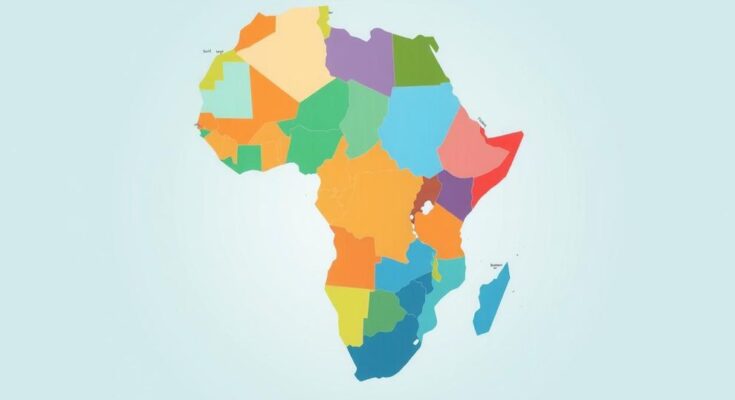This article provides an overview of significant violent events and military activities across various African nations in February 2025, with a central focus on the Central African Republic, Democratic Republic of the Congo, Ghana, Niger, Somalia, and Sudan. Key issues include rising civilian casualties, intensified conflict, and military offensives that have resulted in human suffering amid ongoing power struggles.
Key Developments in Africa: February 2025 Overview
This overview highlights significant developments in several African nations during February 2025, focusing on escalating violence and military actions affecting local populations.
Central African Republic: In February, violence surged between the Anti-balaka militia and Fulani pastoralists following a robbery that resulted in tragic civilian targeting. The conflict, rooted in deep-seated historical disputes over power, led to over 130 fatalities, with the Fulani suffering 85% of the casualties. This represents the deadliest month since March 2022, driven by attacks predominantly in the Ouham-Pendé region.
Democratic Republic of the Congo: The M23 rebel group, supported by the Rwandan Defense Force, captured significant territory including Bukavu, provoking a spike in civilian violence. The Congolese army (FARDC) faced discipline challenges and engaged in looting during their retreat, resulting in increased civilian casualties and accusations of aerial bombardments targeting populated areas. Mob violence and lynchings by locals further exacerbated the instability in South Kivu.
Ghana: In Ghana, the conflict over Bawku chieftaincy spilled into the North East region, leading to a series of violent incidents including attacks by unidentified armed groups. The resurgence of violence was ignited by disputes involving the Mamprusia and Kusasi groups. Increased military reprisals and attacks on civilians, particularly in the Mamprusi West district, augmented insecurity and activity for Islamist groups in the region.
Niger: The Islamic State Sahel Province (ISSP) intensified its offensive in the Dioundiou commune, targeting military forces and village populations, resulting in a sharp increase in fatalities. The attacks signify an effort to secure access to valuable infrastructure, amidst a surge in jihadist activity in border regions with Benin and Nigeria, indicating a broader territorial ambition.
Somalia: An extensive airstrike campaign led by U.S. and UAE forces targeted Islamic State (IS) strongholds in Puntland, marking a significant escalation in counterterrorism efforts. High-value targets among IS militants were eliminated, reflecting a concerted effort against the growing IS threat in the region, while the insurgents retaliated with drone attacks against regional forces.
Sudan: The Sudanese Armed Forces (SAF) achieved significant territorial gains in Khartoum, controlling strategic locations including the Republican Palace, though resistance from the Rapid Support Forces remained fierce. This military campaign represents one of the most substantial advances against the RSF since hostilities intensified in April 2023, also impacting supply routes essential for broader operational success.
This summary encapsulates critical violence and military confrontations across selected African countries, emphasizing ongoing regional instability fuelled by complex historical grievances and modern conflicts.
The February 2025 analysis of developments in Africa reveals a severe escalation in violence across multiple nations, primarily impacting civilians. In the Central African Republic and the Democratic Republic of the Congo, rising militancy and military actions have led to tragic human costs. In Ghana and Niger, local conflicts and jihadist offensives threaten regional stability. Somalia’s airstrikes against IS targets emphasize the international response to growing threats. Lastly, Sudan’s military successes reflect ongoing battles for power amidst significant human suffering. Understanding these dynamics is crucial for any efforts to address peace and security in these affected regions.
Original Source: reliefweb.int




